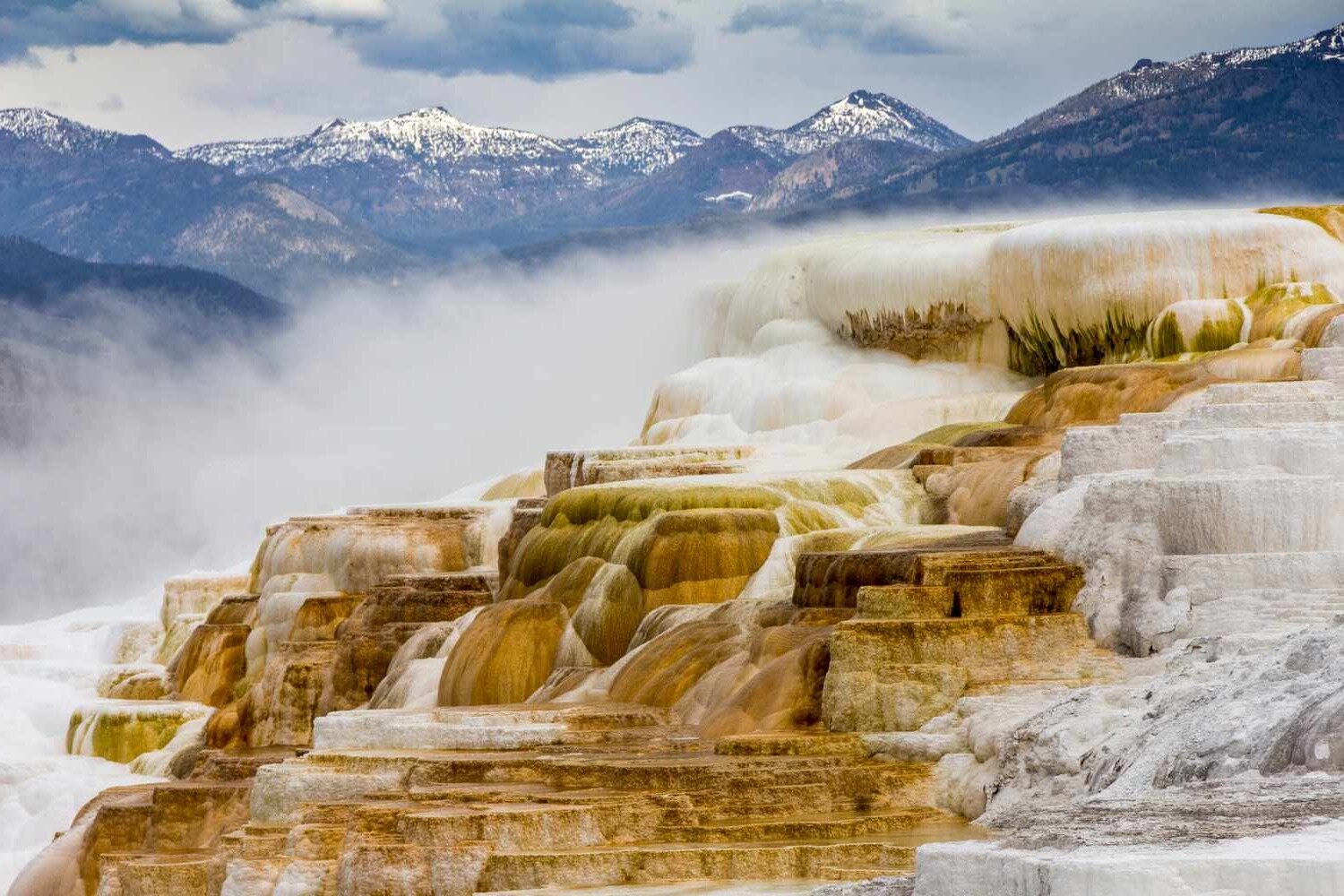Mystery Of Yellowstone’s Travertine Terraces

Have you ever wondered how Yellowstone's travertine terraces came to be? These stunning formations, found mainly in Mammoth Hot Springs, are a sight to behold. Formed by the interaction of hot water, limestone, and carbon dioxide, they create a unique landscape that looks almost otherworldly. The hot water rises through limestone, dissolving calcium carbonate, which then precipitates out as travertine when it reaches the surface. This process has been ongoing for thousands of years, constantly changing the appearance of the terraces. Whether you're a geology buff or just love natural beauty, these terraces offer something truly special. Ready to learn more about this natural wonder?
The Formation of Travertine Terraces
Yellowstone's travertine terraces are a natural wonder. These terraces form through a fascinating process involving hot springs, limestone, and time. Let's explore some of the most stunning terraces in Yellowstone.
- Mammoth Hot Springs
Mammoth Hot Springs is one of the most famous travertine terraces in Yellowstone. The hot water from underground dissolves limestone, which then gets deposited on the surface, creating beautiful, layered terraces. The colors range from white to orange, making it a visual treat.
- Palette Spring
Palette Spring is known for its vibrant colors. The hot water flowing over the terraces deposits minerals that create a palette of hues. It's a must-see for anyone visiting Yellowstone.
- Minerva Terrace
Minerva Terrace stands out with its intricate patterns and formations. The terraces here are constantly changing, as the hot water continues to deposit new layers of minerals. It's a dynamic and ever-evolving sight.
The Role of Microorganisms
Microorganisms play a crucial role in the formation of travertine terraces. These tiny organisms help in the deposition of minerals, adding to the beauty and complexity of the terraces.
- New Blue Spring
New Blue Spring is a perfect example of how microorganisms contribute to the formation of terraces. The blue-green algae found here help in the deposition of calcium carbonate, creating stunning blue terraces.
- Jupiter Terrace
Jupiter Terrace showcases the interplay between microorganisms and mineral deposits. The terraces here are a mix of white, orange, and green, thanks to the different types of algae and bacteria present.
The Impact of Geothermal Activity
Geothermal activity is the driving force behind the formation of travertine terraces. The heat from underground sources causes water to rise to the surface, bringing with it dissolved minerals.
- Cleopatra Terrace
Cleopatra Terrace is a testament to the power of geothermal activity. The hot water flowing over the terraces creates a mesmerizing display of colors and patterns. It's a sight that captures the essence of Yellowstone's geothermal wonders.
- Orange Spring Mound
Orange Spring Mound is another example of geothermal activity at work. The hot water deposits minerals that form a mound-like structure, with terraces cascading down its sides. The orange hue comes from the iron in the water.
The Beauty of Seasonal Changes
Seasonal changes add another layer of beauty to the travertine terraces. The terraces look different in each season, offering a unique experience every time you visit.
- Angel Terrace
Angel Terrace is particularly stunning in winter. The snow and ice create a stark contrast with the warm colors of the terraces, making it a magical sight.
- Canary Spring
Canary Spring is a favorite during spring and summer. The terraces are lush with algae and bacteria, creating a vibrant display of colors. The warm weather also makes it easier to explore the area.
The Importance of Preservation
Preserving these natural wonders is crucial. Human activity can easily disrupt the delicate balance that creates these terraces. It's important to respect the environment and follow guidelines when visiting.
- Liberty Cap
Liberty Cap is a reminder of the importance of preservation. This dormant hot spring cone stands as a testament to the natural processes that create these terraces. By preserving sites like Liberty Cap, we ensure that future generations can enjoy Yellowstone's travertine terraces.
Yellowstone's Travertine Terraces: A Natural Wonder
Yellowstone's travertine terraces are a stunning natural wonder. Formed by hot springs, these terraces showcase nature's artistry. The geothermal activity in the park creates unique formations that change over time, making each visit a new experience. The terraces are not just beautiful but also a testament to the dynamic forces shaping our planet.
Visiting these terraces offers a glimpse into the Earth's geological processes. The vibrant colors and intricate patterns are a photographer's dream. Whether you're a nature lover, a geology enthusiast, or just looking for a breathtaking sight, Yellowstone's travertine terraces won't disappoint.
Plan a trip to Yellowstone and witness these incredible formations firsthand. The park's beauty and the terraces' ever-changing nature make it a must-see destination. Don't miss out on this natural marvel.

